Moist Heat vs. Dry Heat: Which One Works Best for Your Pain?
Suffering from aches and pains, but unsure which heat therapy will offer the relief you crave? Moist heat and dry heat aren't interchangeable. Each boasts unique properties and excels in treating different ailments.
This comprehensive guide discusses everything about heat therapy, helping you navigate the choice between moist and dry heat to find lasting relief.
In this guide, you'll discover:
- The science behind heat therapy and how it heals.
- The distinct mechanisms of moist and dry heat.
- A variety of moist and dry heat applications, including homemade options.
- The pros and cons of each type of heat therapy.
- Specific conditions best suited for moist or dry heat.
- Expert recommendations for choosing the right therapy for your unique needs.
Let's dive in and discover the best heat therapy for your pain relief journey.
Mechanisms of Heat Therapy
Heat therapy, whether moist or dry, isn't just about feeling warm and cozy. It's a powerful tool that harnesses the body's natural responses to heat to promote healing, relaxation, and pain relief.
Benefits of Heat Therapy
The application of heat, in any form, triggers several physiological responses that contribute to its therapeutic benefits:
- Vasodilation: Heat expands blood vessels, increasing blood flow to the treated area. This delivers more oxygen and nutrients to the tissues, aiding in repair and reducing inflammation.
- Pain Reduction: Increased blood flow helps flush out pain-causing substances like lactic acid, while the warmth itself can mask pain signals sent to the brain.
- Muscle Relaxation: Heat soothes tight muscles and reduces muscle spasms, promoting relaxation and improving range of motion.
- Increased Tissue Flexibility: Warmth increases the elasticity of connective tissues like tendons and ligaments, making them more pliable and reducing stiffness.
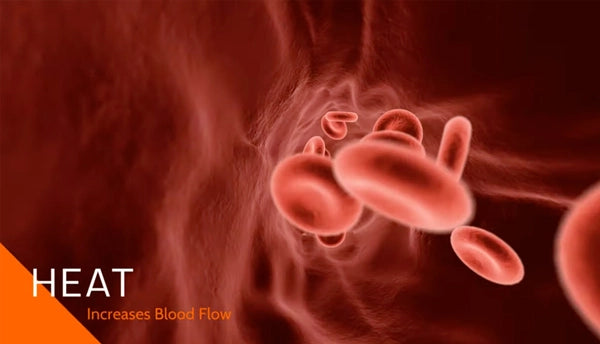
Mechanisms of Moist Heat
Moist heat therapy involves the application of warmth along with moisture. This can be through hot baths, steamed towels, moist heating pads, or warm compresses. The moisture plays a crucial role in how the heat affects your body:
- Deeper Penetration: Moisture enhances heat conduction, allowing it to penetrate deeper into the tissues than dry heat. This makes it particularly effective for relieving deep muscle pain and stiffness.
- Increased Perspiration: Moist heat encourages sweating, which can help flush out toxins and further reduce inflammation.
- Relaxation and Comfort: The combination of warmth and moisture often feels more soothing and relaxing than dry heat alone.
Mechanisms of Dry Heat
Dry heat therapy relies on the direct application of warmth without moisture. Examples include electric heating pads, dry saunas, heat lamps, and dry heating packs.
- Surface Level Relief: Dry heat primarily focuses on the surface layers of the skin and muscles, making it ideal for relieving pain and stiffness in these areas.
- Reduced Risk of Burns: Dry heat tends to be less intense than moist heat, reducing the risk of burns when used correctly.
- Convenience: Dry heat sources are often more portable and easier to use than moist heat options.
By understanding the distinct mechanisms of moist and dry heat, you can make informed decisions about which therapy is most appropriate for your specific needs.
Understanding Moist Heat Therapy
Moist heat therapy, characterized by the combination of warmth and moisture, offers a versatile approach to pain relief and muscle relaxation. Let's talk about various aspects of this therapeutic modality.
Types of Moist Heat
Moist heat can be delivered in several ways, each with its own advantages and applications:
- Hot Baths and Showers: Immersing your body or a specific area in warm water is a simple yet effective way to enjoy the benefits of moist heat. It's particularly beneficial for widespread muscle soreness or stiffness.
- Steamed Towels: Soaking a towel in hot water and wringing it out creates a warm compress that delivers moist heat. This is often used for localized pain, such as neck or back pain.
- Moist Heating Pads: These reusable pads contain water or gel that retains heat when warmed. They are often preferred for chronic pain conditions due to their sustained warmth and ease of use.
- Warm Compresses: A cloth soaked in warm water can be applied directly to the skin for localized pain relief. This is a convenient option for smaller areas like joints or muscles.
- Hydrocollator Packs: Used in physical therapy settings, these packs are filled with silica gel that retains heat for extended periods. They provide deep, penetrating warmth and are often used for muscle spasms and joint pain.
- Paraffin Wax Baths: This unique therapy involves dipping your hands or feet into warm paraffin wax. The wax solidifies, trapping heat and providing deep, soothing relief for conditions like arthritis.
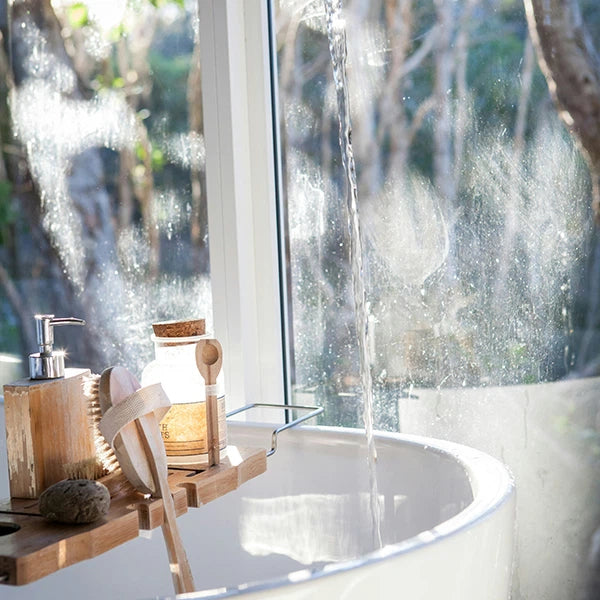
Advantages of Moist Heat
Moist heat therapy boasts several advantages that make it a popular choice for pain relief and relaxation:
- Deep Penetration: As mentioned earlier, moist heat penetrates deeper into the tissues than dry heat. This makes it more effective for reaching muscles, joints, and tendons, providing relief from deep-seated pain and stiffness.
- Increased Circulation: The warmth and moisture dilate blood vessels, increasing blood flow to the treated area. This enhanced circulation delivers oxygen and nutrients to the tissues, promoting healing and reducing inflammation.
- Muscle Relaxation: Moist heat effectively soothes tight muscles, reducing muscle spasms and promoting relaxation. This is especially beneficial for individuals with conditions like fibromyalgia or chronic muscle tension.
- Pain Relief: The combination of deep penetration, increased circulation, and muscle relaxation makes moist heat an excellent choice for relieving various types of pain, including menstrual cramps, back pain, and osteoarthritis.
- Increased Range of Motion: By relaxing muscles and reducing stiffness, moist heat can improve joint flexibility and range of motion. This is particularly valuable for individuals recovering from injuries or dealing with chronic pain conditions.
Disadvantages of Moist Heat
While moist heat offers numerous benefits, it's important to be aware of its potential drawbacks:
- Risk of Burns: The intensity of moist heat can increase the risk of burns, especially if moist heat applied directly to the skin or left on for too long. It's crucial to follow safety guidelines and use protective barriers when necessary.
- Messiness: Moist heat applications can be messy, especially when using warm compresses or steamed towels.
- Limited Portability: Some moist heat sources, like hot baths or hydrocollator packs, are not easily portable, limiting their use to specific locations.
Specific Conditions Treated with Moist Heat
Moist heat therapy is often recommended for the following conditions:
- Muscle Pain and Stiffness: Whether from exercise, injury, or chronic conditions like fibromyalgia, moist heat can help relax tight muscles and alleviate pain.
- Chronic back pain: Moist heat therapy alleviates chronic back pain by increasing blood flow, relaxing muscles, and reducing stiffness, providing effective pain relief and enhancing mobility.
- Joint Pain: Conditions like osteoarthritis and rheumatoid arthritis can benefit from the deep penetrating warmth of moist heat, which helps reduce inflammation and increase joint flexibility.
- Menstrual Cramps: The soothing warmth of moist heat can help relieve menstrual cramps by relaxing the uterine muscles and increasing blood flow.
- Sinus Congestion: Inhaling steam from a bowl of hot water or using a warm compress over the sinuses can help relieve congestion and open up airways.
- Arthritis Pain: Moist heat can provide relief for both osteoarthritis and rheumatoid arthritis by reducing inflammation, improving joint mobility, and relieving pain.
How to Apply Moist Heat
Here are several steps for applying moist heat:
- Choose Your Source: Select a moist heat source like a damp towel or a moist heating pad.
- Heat the Source: Warm the towel or pad according to the instructions, ensuring it’s not too hot.
- Apply to the Affected Area: Place the moist heat source on the area needing relief.
- Monitor the Time: Limit each session to 15-20 minutes to prevent burns or irritation.
- Repeat as Needed: You can apply moist heat multiple times a day, with breaks in between to protect your skin.

Understanding Dry Heat Therapy
Dry heat therapy, as the name suggests, provides warmth without the addition of moisture. While it may not penetrate as deeply as moist heat, it offers distinct advantages and applications for various conditions.
Types of Dry Heat
Several methods deliver dry heat for therapeutic purposes:
- Electric Heating Pads: These versatile pads offer adjustable heat settings and are commonly used for muscle pain, back pain, and menstrual cramps. Some models even come with vibration features for added relaxation.
- Dry Heating Packs: Filled with natural materials like rice, beans, or cherry pits, these packs can be heated in a microwave and offer soothing warmth. They are often used for localized pain and discomfort.
- Heat Lamps: These lamps emit infrared radiation, which penetrates the skin and warms the underlying tissues. They are commonly used in physical therapy settings for muscle pain and stiffness.
- Dry Saunas: Saunas provide dry heat through heated rocks or wood. While primarily used for relaxation and detoxification, they can also offer relief for muscle soreness and joint pain.
- Fluid Therapy: This specialized dry heat therapy involves immersing the affected body part in a container filled with heated cellulose particles. The particles circulate, creating a massaging effect while delivering dry heat. It's often used for hand and foot conditions like arthritis and carpal tunnel syndrome.

Advantages of Dry Heat
Dry heat therapy offers several benefits that make it a valuable tool for pain management:
- Convenience: Dry heat sources like electric heating pads and dry heating packs are readily available, easy to use, and portable, allowing for convenient pain relief at home or on the go.
- Reduced Risk of Burns: Compared to moist heat, dry heat is less intense and carries a lower risk of burns, making it a safer option for some individuals.
- Longer-Lasting Heat: Dry heat sources tend to retain heat for longer periods than moist heat, providing sustained relief for chronic pain conditions.
- Suitable for Sensitive Skin: Individuals with sensitive skin or certain skin conditions may find dry heat to be more tolerable than moist heat, as it doesn't add moisture to the skin.
Disadvantages of Dry Heat
While dry heat offers numerous advantages, it's important to consider its potential drawbacks:
- Less Deep Penetration: Dry heat primarily affects the surface layers of the aging skin and muscles, making it less effective for deep-seated pain or stiffness in joints and tendons.
- Drying Effect: Prolonged use of dry heat can dry out the skin, potentially leading to irritation or discomfort.
- Less Effective for Muscle Relaxation: While dry heat can provide some muscle relaxation, it may not be as effective as moist heat for relieving muscle spasms or tension.
Specific Conditions Treated with Dry Heat
Dry heat therapy is often recommended for:
- Superficial Muscle Soreness: Dry heat can alleviate mild to moderate muscle pain and stiffness, particularly in superficial muscles.
- Back Pain: Electric heating pads and dry heating packs are frequently used for back pain relief, as they can be easily applied to the affected area.
- Menstrual Cramps: Dry heat can help relax the uterine muscles and reduce cramping.
- Mild Arthritis Pain: While moist heat is generally preferred for arthritis, dry heat can provide some relief, especially for mild pain or stiffness in the hands or feet.
How to Apply Dry Heat
Applying dry heat is generally straightforward:
- Choose Your Source: Select the dry heat source that best suits your needs and the area you want to treat.
- Set the Temperature: If using an electric heating pad, adjust the heat setting to a comfortable level. If using a heating pack, follow the heating instructions carefully.
- Apply to the Affected Area: Place the heating pad or pack directly on the area experiencing pain or stiffness.
- Monitor the Time: Limit each session to 15-20 minutes to avoid overheating and potential burns.
- Repeat as Needed: You can typically use dry heat several times a day, but it's important to give your skin a break between sessions.

Comparison of Moist Heat vs. Dry Heat
With a better understanding of moist and dry heat therapy, let's compare them head-to-head to determine which might be the better choice for your specific pain relief needs.
Effectiveness of Different Types of Pain
Acute vs. Chronic Pain: Moist heat is generally better for chronic conditions, while dry heat can be effective for acute, superficial pain.
Superficial vs. Deep Tissue Pain: Moist heat is superior to deep tissue pain, whereas dry heat is more suitable for superficial pain relief.

Moist heat is generally more effective for:
- Deep muscle pain: Due to its deeper penetration, moist heat can reach and soothe deeper muscle aches and tension.
- Joint stiffness: Moist heat increases blood flow and promotes flexibility in joints, making them less stiff and easier to move.
- Menstrual cramps: The warmth and increased blood flow from moist heat can help relax the uterine muscles and alleviate menstrual cramps.
- Chronic pain: Moist heat's ability to penetrate deeper tissues makes it a more effective choice for managing chronic pain conditions.
Dry heat is a better choice for:
- Back pain: While moist heat can be helpful for lower back pain, dry heat is often more convenient and effective for mild to moderate back pain.
- Neck pain: Heat packs and other dry heat sources can provide relief for neck pain.
- Muscle soreness: Dry heat can offer temporary relief from muscle soreness and discomfort.
However, it's important to note that dry heat may not be as effective as moist heat for:
- Deep muscle pain: Dry heat may not reach deep enough to soothe pain in deeper muscle layers.
- Joint stiffness: While dry heat can provide some relief for stiff joints, moist heat is generally more effective in improving joint flexibility.
- Chronic pain: Due to its limited penetration, dry heat is less effective for managing chronic pain in deeper tissues.
Practical Considerations
- Moist Heat: This can be messier and less convenient than dry heat, as it often involves water or damp materials. Some moist heat sources, like hot baths, require more time to prepare and use them.
- Dry Heat: Generally more convenient and easier to use, with many portable options available. Dry heat sources like electric dry heating pads can be used while relaxing or even working.
Safety and Side Effects
- Moist Heat: Carries a higher risk of burns if not used carefully. It's essential to monitor the connective tissue temperature and duration of application. Individuals with certain medical conditions, like diabetes or circulatory problems, should consult a healthcare professional before using moist heat.
- Dry Heat: Generally safer than moist heat, but prolonged use can lead to dry skin. Avoid using dry heat on open wounds or areas with impaired sensation.
Ultimately, the choice between moist and dry heat depends on your individual needs and preferences. Consider the type and location of your pain, convenience, and any underlying medical conditions. If you're unsure which therapy is right for you, consult a healthcare professional for personalized guidance.
Clinical Recommendations
While this guide offers valuable information on the differences and benefits of moist and dry heat, it's crucial to remember that every individual's pain experience is unique. Here's how to make informed decisions and integrate heat therapy into your pain management plan.
Guidelines for Choosing Between Moist and Dry Heat
Consider these factors when deciding which type of heat therapy might be best for you:
Type of Pain:
- Deep Muscle Pain or Stiffness: Moist heat is often more effective due to its deeper penetration. Consider warm baths, moist heat packs, or warm compresses.
- Surface-Level Pain or General Soreness: Dry heat might be sufficient, especially for mild to moderate discomfort. Electric heating pads or dry heating packs are good options.
Location of Pain:
- Large Areas: Moist heat, like a hot bath or shower, is often easier to apply to larger body areas.
- Specific Areas: Dry heat sources, such as heating pads, can be more targeted to specific pain points.
Personal Preference:
- Relaxation and Comfort: Moist heat often feels more soothing and relaxing due to the combination of warmth and moisture.
- Convenience and Ease of Use: Dry heat sources tend to be more portable and easier to use on the go.
Safety Considerations:
- Sensitive Skin or Open Wounds: Dry heat may be a safer option to avoid irritation.
- Impaired Sensation: Individuals with reduced sensation should use caution with both types of heat to avoid burns.
Underlying Medical Conditions:
- Diabetes, Circulation Problems, or Pregnancy: Consult your doctor before using thermal heat therapy.
Combining Heat Therapies with Other Treatments
Heat therapy is often most effective when combined with other pain management strategies:
- Physical Therapy: Heat can be used before or after physical therapy exercises to improve muscle flexibility and reduce pain.

- Medications: Over-the-counter pain relievers like ibuprofen or naproxen may be taken in conjunction with heat therapy for enhanced pain relief.

- Stretching and Exercise: Gentle stretching or exercise before or after applying heat can further improve the range of motion and reduce stiffness.

- Massage: Combining heat with massage can create a deeply relaxing and pain-relieving experience.

- Acupuncture: Combining heat therapy with acupuncture enhances pain relief, improves circulation, and promotes healing through synergistic effects of needles and warmth.

Remember, heat therapy is just one tool in your pain management toolbox. If your pain is severe, persistent, or accompanied by other symptoms, consult a healthcare professional for a comprehensive diagnosis and treatment plan.
Combining Both Moist and Dry Heat Therapies: The Best of Both Worlds
While moist and dry heat each have their strengths, combining both types of therapy can offer even more comprehensive pain relief and recovery benefits. Here are some ways to integrate both methods into your routine:
Alternating Moist and Dry Heat:
- Begin with moist heat to penetrate deep tissues and relax muscles.
- Follow up with dry heat to maintain warmth and comfort for a longer duration.
- This approach can be particularly helpful for chronic pain conditions, offering both deep and surface-level relief.
Layered Heat Therapy:
- Apply a moist heating pad or warm compress directly to the affected area.
- Cover it with a dry heating pad to trap the moisture and intensify the heat.
- This layering technique can enhance the effectiveness of both therapies, providing deeper penetration and longer-lasting warmth.
Contrast Therapy:
- Alternate between moist and dry heat at different temperatures.
- For example, start with a warm shower followed by a cold compress, or alternate between a warm compress and an ice pack.
- Contrast therapy can help reduce inflammation, improve circulation, and promote pain relief, especially for acute injuries or inflammatory conditions.
Combined with Other Therapies:
- Use moist or dry heat before or after physical therapy, massage, or stretching to enhance the benefits of these treatments.
- Heat can help prepare the muscles for stretching and exercise, improve range of motion, and reduce post-exercise soreness.
Precautions and Considerations:
- Always consult a healthcare professional before combining heat therapies, especially if you have any underlying medical conditions.
- Avoid using heat on open wounds, areas with impaired sensation, or areas with recent bruising.
- Monitor the temperature and duration of heat application to prevent burns.
- If you experience any discomfort or worsening of symptoms, discontinue heat therapy and consult your doctor.
By strategically combining dry and moist heat, you can customize your pain management plan and enjoy the benefits of both therapies. However, remember that individual responses to heat can vary, so it's important to listen to your body and adjust your approach accordingly.
Find Your Perfect Heat Therapy Solution at Homlyns
Congratulations on completing this comprehensive guide to dry heat versus moist heat therapy! Armed with this knowledge, you can confidently choose the right heat therapy to manage your pain, improve your mobility, and enhance your overall well-being. Remember, personalized pain management is key, so listen to your body and adapt your approach as needed.
Homlyns Weighted Heating Pad for Pain Relief

- Deep Pressure Therapy: Provides soothing weight to relax muscles deeply, enhancing pain relief and overall comfort.
- Customizable Heat Settings: Features adjustable warmth levels, allowing you to find the perfect temperature for your needs.
- Large Coverage Area: Designed to cover a broader area, offering effective pain relief for more body parts simultaneously.
- Durable Graphene Materials: Utilizes advanced graphene for even heat distribution and long-lasting durability, ensuring reliable performance.
Key Takeaways:
- Moist heating packs penetrate deeper, ideal for chronic or deep muscle pain.
- The dry heat pack is convenient and safer for surface-level pain and relaxation.
- Consider your pain type, location, and personal preferences when choosing.
- Combine heat therapy with other treatments for enhanced relief.
- Consult a healthcare professional for personalized guidance.
At Homlyns, we understand the importance of warmth and comfort in achieving true relaxation and pain relief. That's why we offer a range of high-quality, heated home and bedding products designed to soothe your aches and enhance your well-being.
Whether you're seeking the deep penetrating warmth of moist heat or the convenient comfort of dry heat, Homlyns has a solution for you. Explore our collection today and discover the perfect heat therapy companion for your journey to a pain-free life.
*Some graphic source network, copyright belongs to the original author, if there is infringement to inform the remedy.
Reference:
- Cho YS, Choi YH, Yoon C, You JS. Factors affecting the depth of burns occurring in medical institutions. Burns. 2015;41(3):604-608. doi:10.1016/j.burns.2014.09.008




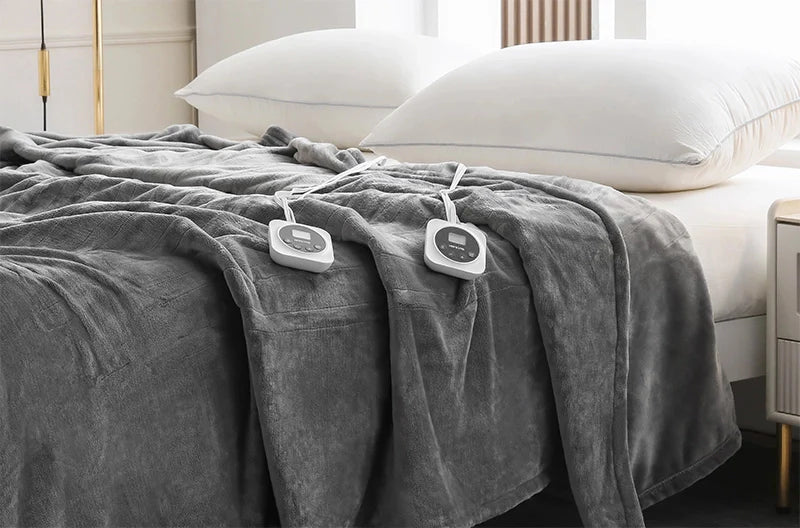
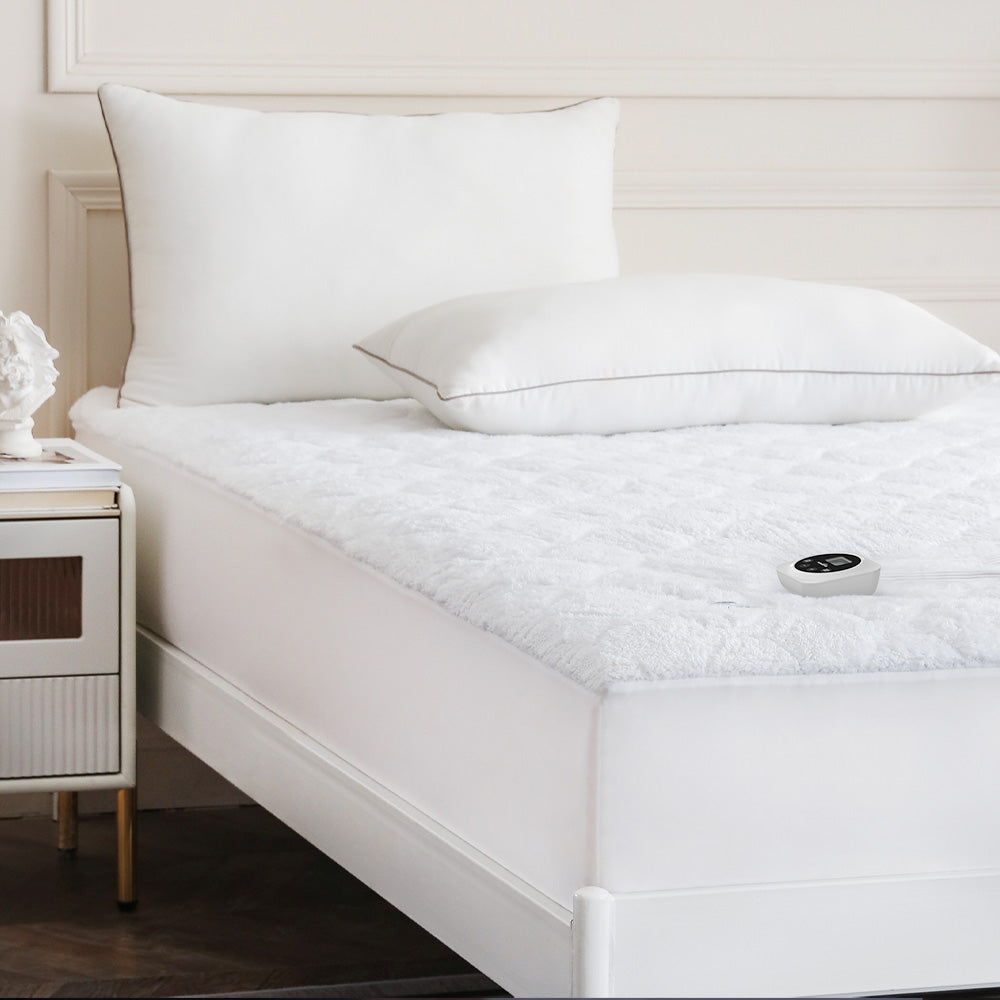
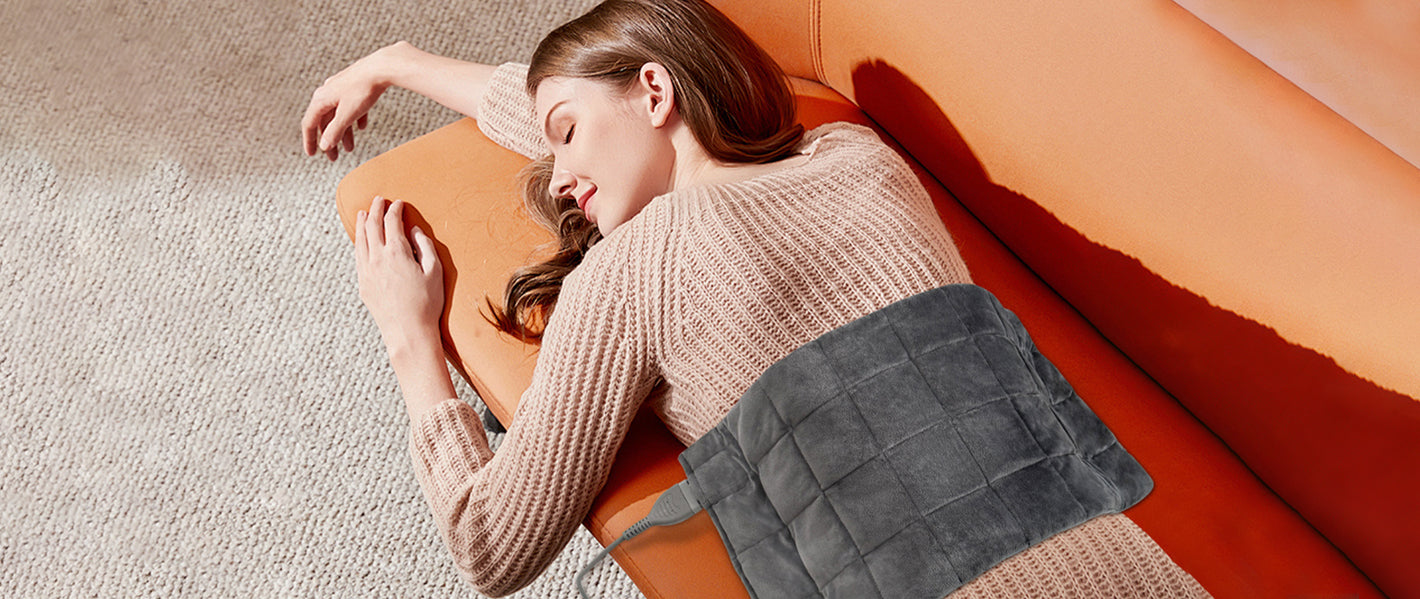
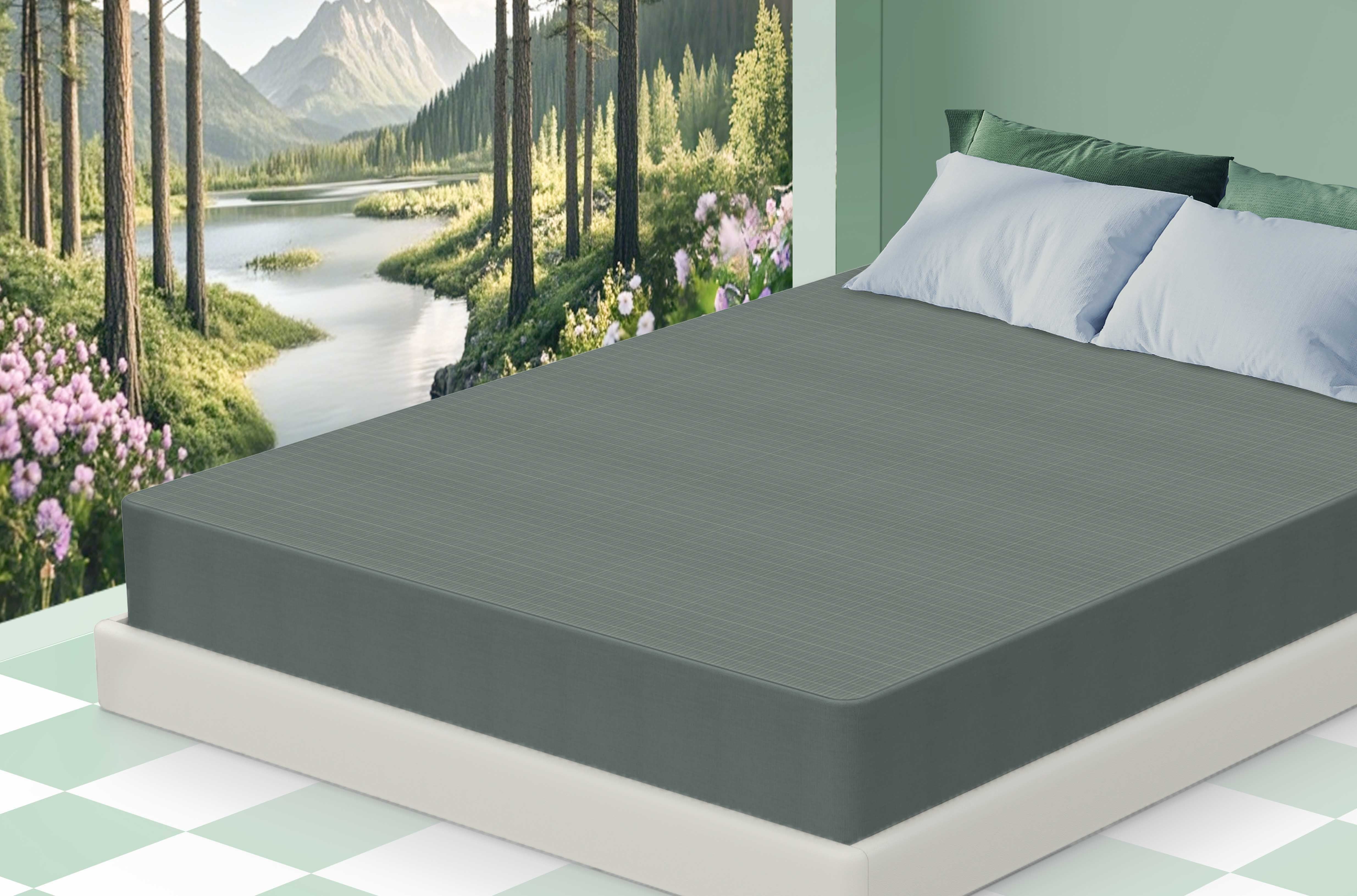

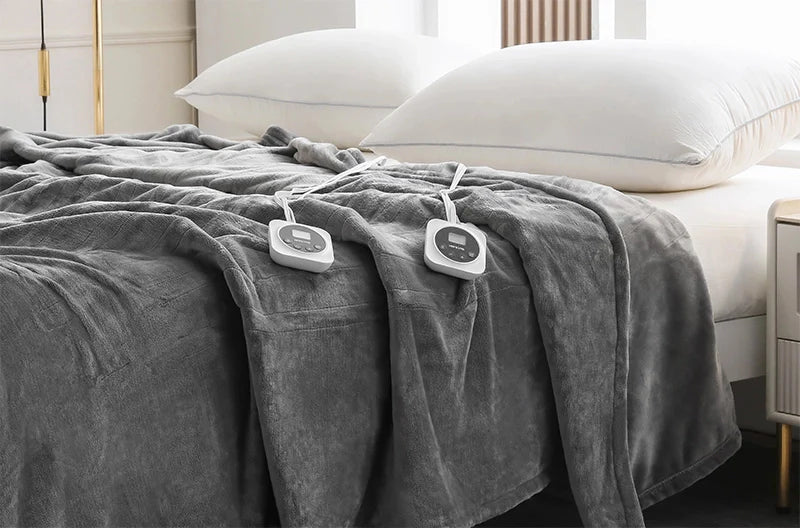
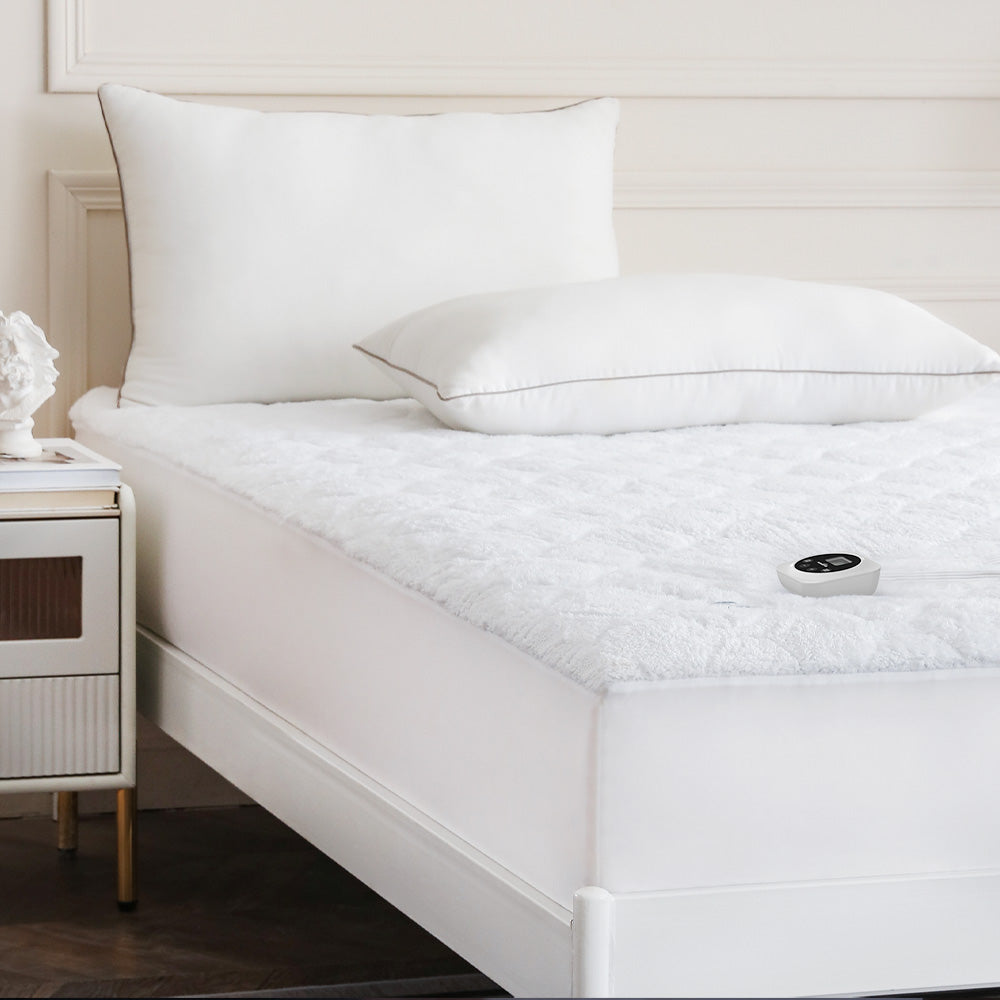
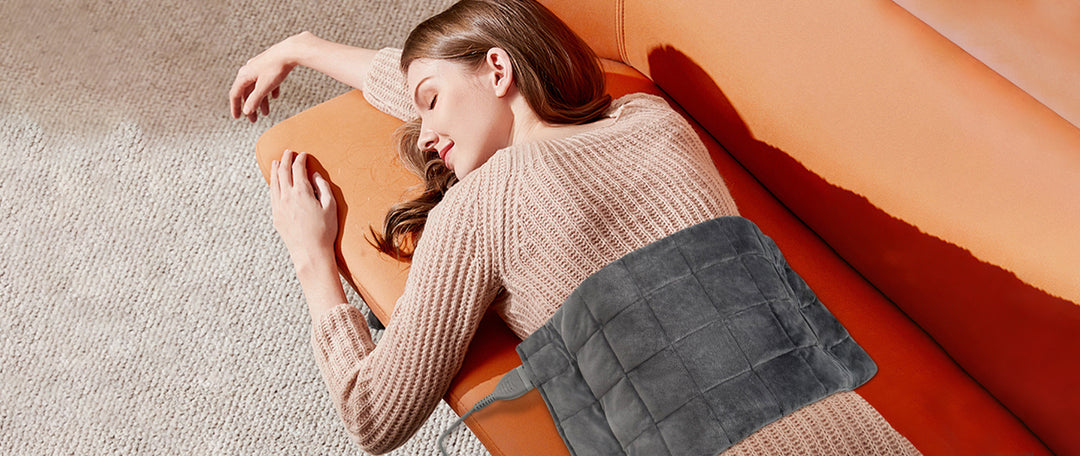
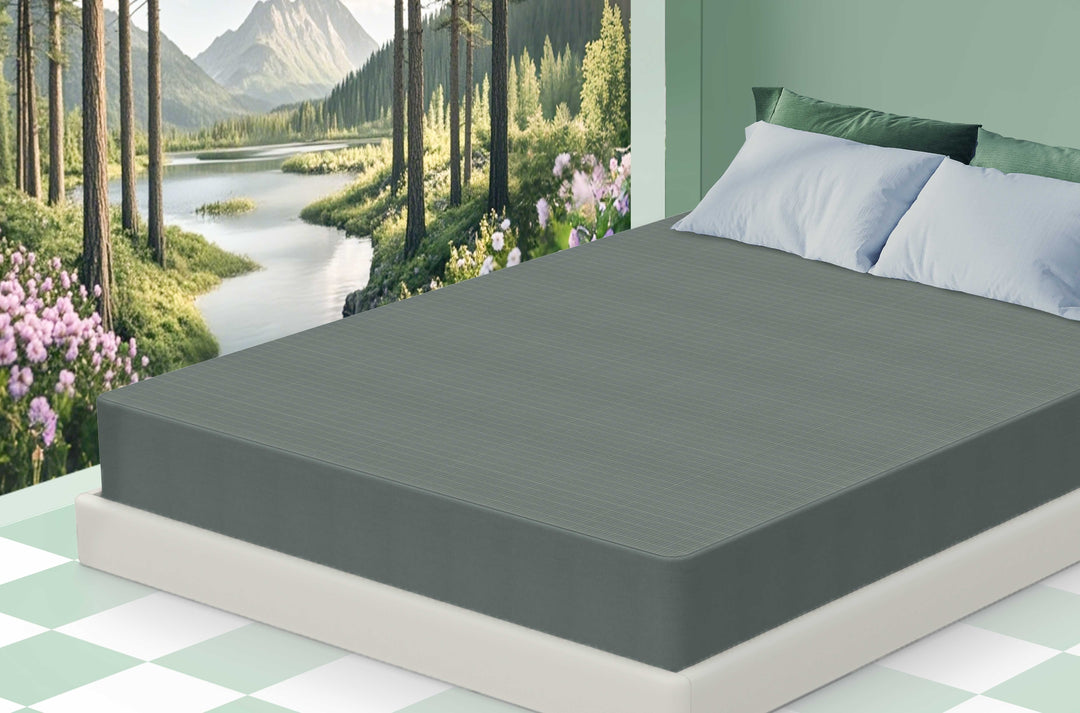



Leave a comment